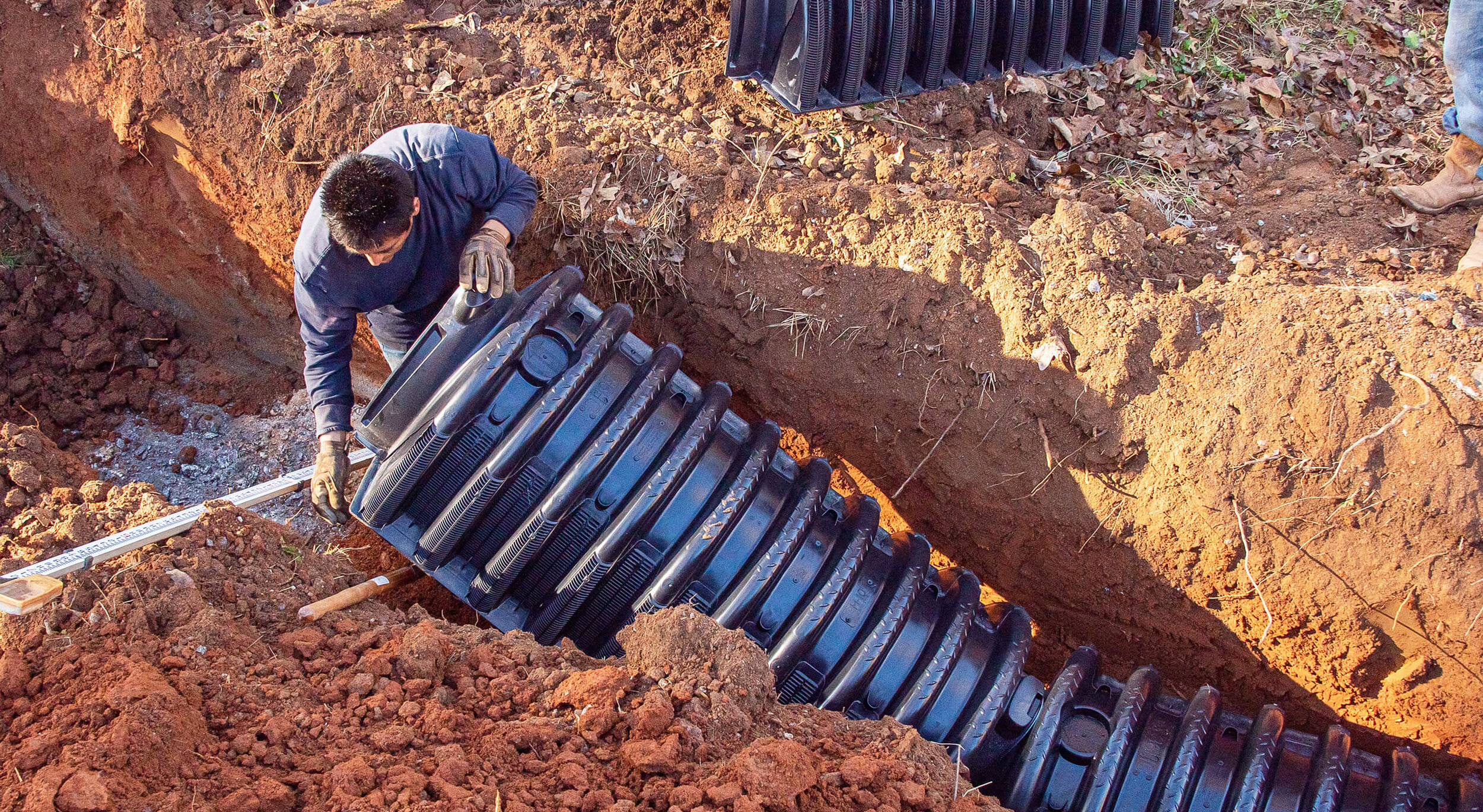
How Does A Septic Tank System Work?
A septic tank is a self-contained unit designed to hold residential wastewater. The system is comprised of two main components: the tank and the drain (commonly referred to as a ‘leach field’ or ‘drain’). Most homes employ gravity to push all water and waste carried by that water down into the home’s drain pipes and out through a main sewer pipe into your septic tank. Once it reaches your septic tank, these materials settle and separate–the solids settling into the bottom of the tank–while the scum (oil, grease and soap residue) float to the top. Once the tank reaches its capacity, the overflow water streams out through a series of porous pipes into a drain field. This drain field is typically made up of gravel or other equivalent systems meant to protect against unnecessary runoff. This ensures that before it reaches the local groundwater, the water is virtually sterile.
At the same time, those solids that have settled into the bottom of the septic tank begin to break down by the affect of local microbes, creating a layer of sludgy material. Septic tanks, as well as drain fields, like any other part of your septic system, require consistent care and maintenance. The size of the septic tank you will need depends mostly on the size of the house and the number of people who live there. Common residential septic tanks range in size from 1,000 gallons to 1,500 gallons.
Are You Wondering When You Should Have Your Septic Tank Pumped or Cleaned?
We Proudly Serve:
Cumming, Atlanta, Milton, Johns Creek, Roswell, Alpharetta, Gainesville, Canton, Dahlonega, Suwanee, Buford, Dawsonville, Marietta, Sugar Hill, Woodstock, Lawrenceville, Sandy Springs, Georgia and beyond.


